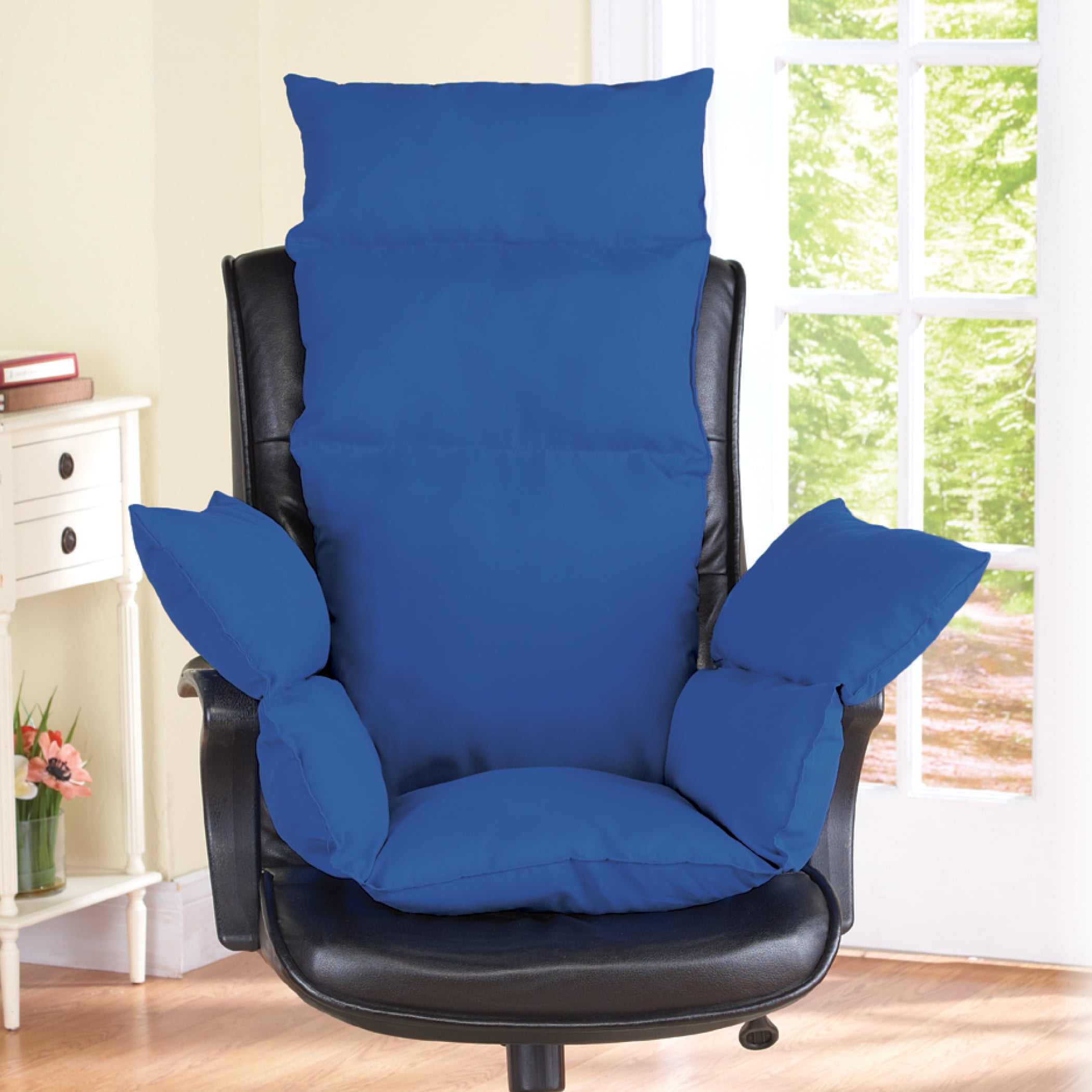Types of Chair Pads for Desk Chairs

Chair pads are a simple but effective way to improve your comfort and support while sitting at your desk. They come in a variety of materials and designs, each with its own unique benefits. Choosing the right chair pad for your needs depends on your individual preferences and the type of desk chair you use.
Memory Foam Chair Pads, Chair pads for desk chairs
Memory foam chair pads are known for their ability to conform to your body shape, providing excellent pressure relief and support. They are made from a viscoelastic material that reacts to heat and pressure, molding itself to your unique contours. This personalized fit helps to reduce pressure points and promote proper posture.
- Benefits: Memory foam chair pads offer superior comfort and pressure relief, reducing fatigue and pain in your back, hips, and tailbone.
- Drawbacks: Memory foam can sometimes feel too warm or sticky, especially in hot weather. They may also be heavier than other types of chair pads.
- Examples: Memory foam chair pads are commonly used with office chairs, gaming chairs, and ergonomic chairs, as they offer excellent comfort and support for long periods of sitting.
Gel Chair Pads
Gel chair pads are designed to provide a cooling sensation and reduce pressure points. They are made from a gel material that stays cool to the touch, making them a good option for people who tend to get hot while sitting. Gel chair pads also offer good pressure distribution, reducing pressure on sensitive areas like the tailbone and hips.
- Benefits: Gel chair pads offer a cooling sensation and pressure relief, making them ideal for hot climates or people who tend to sweat while sitting.
- Drawbacks: Gel chair pads can be less comfortable than memory foam pads, as they may not conform as well to the body shape. They can also be more expensive than other types of chair pads.
- Examples: Gel chair pads are often used with office chairs and ergonomic chairs, as they offer a cooling effect and pressure relief for long periods of sitting.
Lumbar Support Chair Pads
Lumbar support chair pads are designed to provide extra support for your lower back. They typically have a contoured shape that fits snugly against your lumbar region, helping to maintain proper posture and reduce back pain. Lumbar support pads are often used in conjunction with other types of chair pads, such as memory foam or gel pads.
- Benefits: Lumbar support chair pads help to improve posture, reduce back pain, and prevent injuries.
- Drawbacks: Lumbar support pads can be bulky and may not be comfortable for everyone.
- Examples: Lumbar support chair pads are commonly used with office chairs, gaming chairs, and ergonomic chairs, as they provide extra support for the lower back.
Orthopedic Chair Pads
Orthopedic chair pads are designed to provide support and comfort for people with specific medical conditions, such as back pain, sciatica, or coccyx pain. They are often made from memory foam or gel, and they may have additional features like a contoured shape, adjustable height, or a cutout for the tailbone.
- Benefits: Orthopedic chair pads offer targeted support and pressure relief, helping to reduce pain and discomfort for people with specific medical conditions.
- Drawbacks: Orthopedic chair pads can be expensive and may not be suitable for everyone.
- Examples: Orthopedic chair pads are commonly used with office chairs, gaming chairs, and ergonomic chairs, as they offer targeted support for people with back pain, sciatica, or coccyx pain.
Benefits of Using Chair Pads for Desk Chairs

Sitting for long periods can take a toll on your body, leading to discomfort, pain, and even health problems. A chair pad can be a simple yet effective solution to these issues, providing comfort, support, and pain relief.
Improved Comfort and Reduced Pain
Chair pads offer a layer of cushioning between you and your chair, significantly improving comfort. This extra padding can alleviate pressure points, reduce stiffness, and make sitting for long periods more enjoyable.
Preventing Back Pain, Neck Pain, and Hip Pain
Chair pads can help prevent and alleviate back pain, neck pain, and hip pain by providing proper support and alignment.
- Back Pain: Chair pads with lumbar support can help maintain the natural curve of your spine, reducing strain on your lower back. This is especially beneficial for people who experience lower back pain from prolonged sitting.
- Neck Pain: A chair pad that promotes good posture can help reduce neck pain by ensuring your head is aligned with your spine.
- Hip Pain: Chair pads with a contoured design can help distribute weight evenly, reducing pressure on your hips and thighs. This can be particularly helpful for people who experience hip pain or discomfort from sitting for extended periods.
Improved Posture and Overall Health
Good posture is crucial for overall health and well-being. Chair pads can encourage better posture by providing support and comfort. This can help reduce strain on your muscles and joints, leading to fewer aches and pains.
Chair pads for desk chairs – Chair pads are a must-have for any desk chair, especially if you’re working from home and spending long hours seated. They can add extra comfort and support, but for a truly luxurious experience, consider pairing your pad with a leather desk chair no wheels.
This combination offers a timeless elegance and a touch of sophistication, ensuring your work space feels as good as it looks!
Chair pads for desk chairs are a must-have for anyone who spends long hours sitting! They provide extra comfort and support, making your workdays more enjoyable. Speaking of comfort, have you seen those two tone kitchen cabinets white and blue ?
They’re so stylish and modern! But back to chair pads, they also help protect your chair from wear and tear, so you can enjoy it for years to come.
